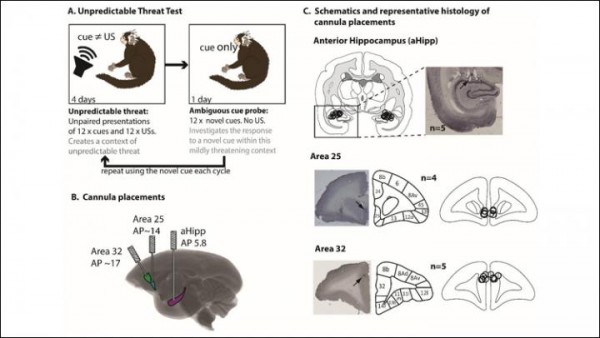Boosting glutamate reduces anxiety in monkeys

Researchers studying male and female marmosets have homed in on the primate brain circuitry responsible for individual differences in overall anxiety. Their findings, published in JNeurosci, show that increasing levels of the neurotransmitter glutamate in the hippocampus normalizes anxious monkeys' "fight or flight" response.
Previous human and animal studies suggest roles for glutamate, the hippocampus, and two prefrontal brain regions -- known as area 25 and area 32 -- in the behavioral and physiological response to threat. However, the contribution and interaction of these neural components in highly anxious primates is unclear.
Hannah Clarke and colleagues were able to make anxious monkeys more comfortable with an unfamiliar human, who wore different masks to conceal his or her identity, by increasing glutamate release in the anterior hippocampus. In response to an unexpected loud sound, increased hippocampal glutamate was associated with increased blood pressure, heart rate, and scanning of the environment -- all of which are part of a typical threat response and reduced in anxious individuals. These effects depended on functioning of area 25, implicating this brain region and its connection to the hippocampus as a promising target for reducing anxiety.
Feb 05, 2019 08:47 AM EST





